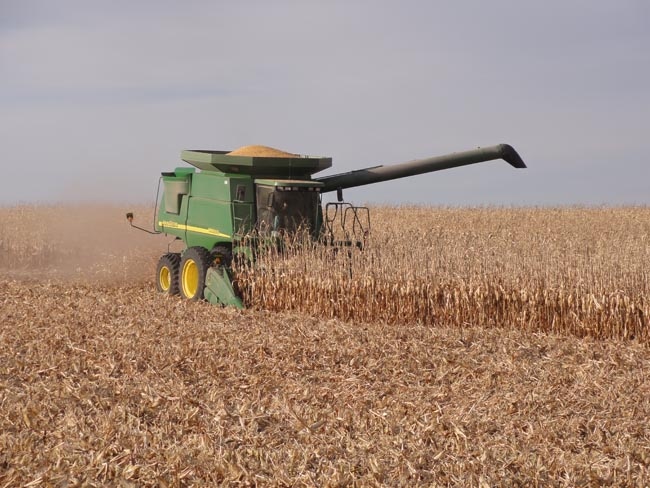September 12, 2012

Corn and soybean yield projections decreased Wednesday (Sept. 12) as the nation's Corn Belt continues to suffer through the worst drought since at least 1956.
According to a U.S. Department of Agriculture Crop Production report, the nation's corn crop could be just 10.7 billion bu., down less than 1% from the Aug. 10 report and 13% from 2011. Those numbers represent the smallest corn crop since 2006.
While the corn yield projections declined, Purdue Extension agricultural economist Chris Hurt said they didn't drop as much as expected compared with the August report.
"The surprise was on the corn market. Corn yields were not dropped very much — about 6/10 of a bu. per acre," Hurt said. "What we saw is that in the primary Midwest, especially Illinois, Iowa and Nebraska, the yields all came down some. But in the southern tier of states, we actually saw an increase in yields, so we kind of had an offset."
Soybean production was forecast at 2.63 billion bu., down 2% since August and 14% from 2011. The projections are slightly less than what Hurt said markets anticipated.
Indiana's corn and soybean yield projections held steady from August to September. The USDA anticipated 605 million bu. of corn, down 28% from 2011. Indiana soybeans were projected at 184.6 million bu., down 22% from 2011.
Wednesday corn markets were bearish on the heels of the release of the USDA report, but soybean futures prices jumped. Cash corn prices for new crop ranged from $7.75 to $8 per bu., while new crop-cash soybean prices averaged between $17 and $17.50 in Indiana.
Hurt said the report can give corn and soybean growers some insight for marketing the crops.
"As we think about marketing, there certainly are some differences between corn and soybeans," he said. "For corn, current bids into the storage season are relatively flat going across the fall and into the spring, without substantial increases or decreases. What that tells us is that storing corn still makes some sense if one believes corn prices can still rally and that there is limited concern about a major drop in prices.
"Soybeans are different because of the very large South American production. If they have a reasonable growing season, we're going to start seeing lower soybean prices by maybe January and especially February and March."
The strong cash and futures prices will help some grain producers offset drought-induced harvest losses. October grain prices also will influence the amount some insured producers will receive in indemnity payments. But the reduced yields and high prices do little to help the negative profit margins of livestock producers struggling to feed their herds.
"The livestock industry gets just a tiny bit of reprieve in the sense that corn isn't as desperately short as I think many people thought going into this report," Hurt said. "On the other hand, corn prices aren't going to fade substantially. It's going to be very difficult for the livestock industry to just hold on as cash flows are probably going to be negative for the most part."
Purdue Extension agricultural economist Corinne Alexander will offer additional analysis of the report and a 2013 Agricultural Outlook during a free webinar at 8:30 a.m. EDT Thursday (Sept. 13) at https://gomeet.itap.purdue.edu/outlook/.
The webinar also will be recorded and archived at http://www.agecon.purdue.edu/extension/programs/lunch.asp.
The USDA's full report is available for download at http://usda.mannlib.cornell.edu/MannUsda/viewDocumentInfo.do?documentID=1046.
You May Also Like




